 全部商品分类
全部商品分类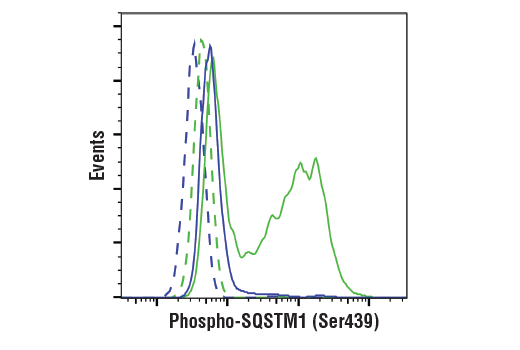



Monoclonal antibody is produced by immunizing animals with a synthetic phospho-peptide corresponding to residues surrounding Ser349 of human SQSTM1/62 protein.


Product Usage Information
| Application | Dilution |
|---|---|
| Western Blotting | 1:1000 |
| Immunohistochemistry (Paraffin) | 1:1600 - 1:6400 |
| Immunofluorescence (Immunocytochemistry) | 1:200 - 1:800 |
| Flow Cytometry (Fixed/Permeabilized) | 1:400 - 1:1600 |







Specificity/Sensitivity
Species Reactivity:
Human, Mouse




Supplied in 10 mM sodium HEPES (pH 7.5), 150 mM NaCl, 100 µg/ml BSA, 50% glycerol and less than 0.02% sodium azide. Store at –20°C. Do not aliquot the antibody.


参考图片
Flow cytometric analysis of PC-3 cells, untreated (blue) or treated with sodium arsenite (15 µM, 18 hr; green), using Phospho-SQSTM1 (Ser349) (E7I4Z) Rabbit mAb (solid lines) or concentration-matched Rabbit (DA1E) mAb IgG XP® Isotype Control #3900 (dashed lines). Anti-rabbit IgG (H+L), F(ab')2 Fragment (Alexa Fluor® 647 Conjugate) #4414 was used as a secondary antibody.
Western blot analysis of extracts from wild-type MEF and MEF SQSTM1/p62 KO cell lines, untreated (-) or treated with sodium arsenite (15 μM, 18 hr; +), using Phospho-SQSTM1/p62 (Ser349) (E7M1A) Rabbit mAb (upper), SQSTM1/p62 (D1Q5S) Rabbit mAb #39749 (middle), or GAPDH (D16H11) XP® Rabbit mAb #5174 (lower). MEF SQSTM1/p62 KO cells were kindly provided by Dr. Junying Yuan, Harvard Medical School, Boston MA.
Western blot analysis of extracts from PC-3 cells treated with sodium arsenite (15 μM, indicated times) using Phospho-SQSTM1/p62 (Ser349) (E7M1A) Rabbit mAb (upper), SQSTM1/p62 (D5L7G) Mouse mAb #88588 (middle), or β-Actin (D6A8) Rabbit mAb #8457 (lower).
Western blot analysis of extracts from PC-3 cells treated with sodium arsenite (15 μM, 18 hr) with lysates that were untreated (-) or treated with lambda-phosphatase and calf intestinal phosphatase (λPPase/CIP; +) using Phospho-SQSTM1/p62 (Ser349) (E7M1A) Rabbit mAb (upper), SQSTM1/p62 (D5L7G) Mouse mAb #88588 (middle), or β-Actin (D6A8) Rabbit mAb #8457 (lower).
Immunohistochemical analysis of paraffin-embedded 293T cell pellet, untreated (left, negative) or treated with sodium arsenite (right, positive), using Phospho-SQSTM1/p62 (Ser349) (E7M1A) Rabbit mAb.
Immunohistochemical analysis of paraffin-embedded human colon adenocarcinoma, untreated (left) or lambda phosphatase treated (right), using Phospho-SQSTM1/p62 (Ser349) (E7M1A) Rabbit mAb.
Immunohistochemical analysis of paraffin-embedded human lung adenocarcinoma, untreated (left) or lambda phosphatase treated (right), using Phospho-SQSTM1/p62 (Ser349) (E7M1A) Rabbit mAb.
Confocal immunofluorescent analysis of PC-3 cells, untreated (left), treated with sodium arsenite (15 μM, 18 hr; center), or treated with sodium arsenite and post-processed with λ-phosphatase (right), using Phospho-SQSTM1 (Ser349) (E7M1A) Rabbit mAb (green). Actin filaments were labeled with DyLight™ 650 Phalloidin #12956 (red). Blue = DAPI #4083 (fluorescent DNA dye).



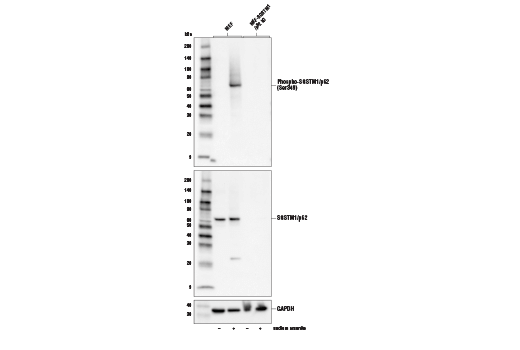
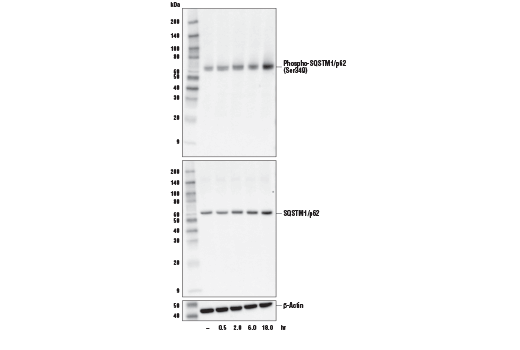
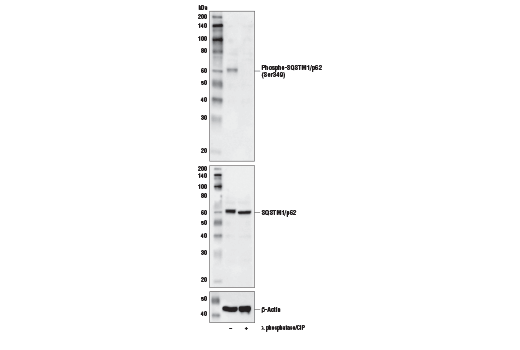

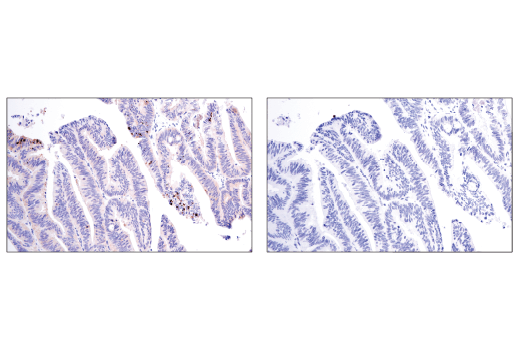
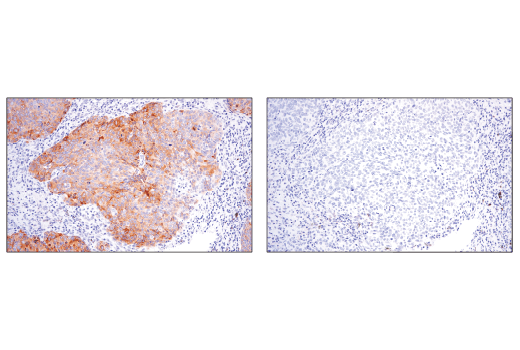




 用小程序,查商品更便捷
用小程序,查商品更便捷




